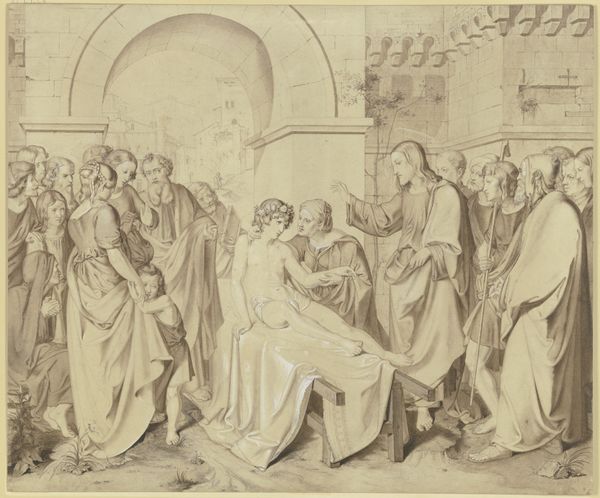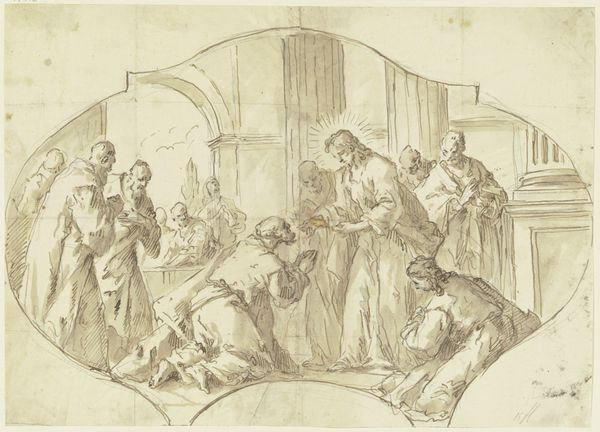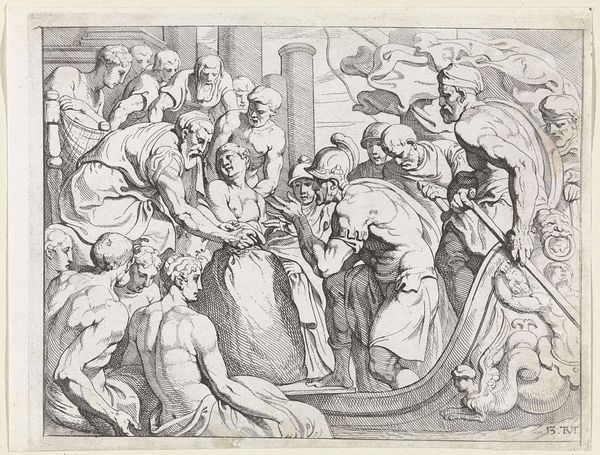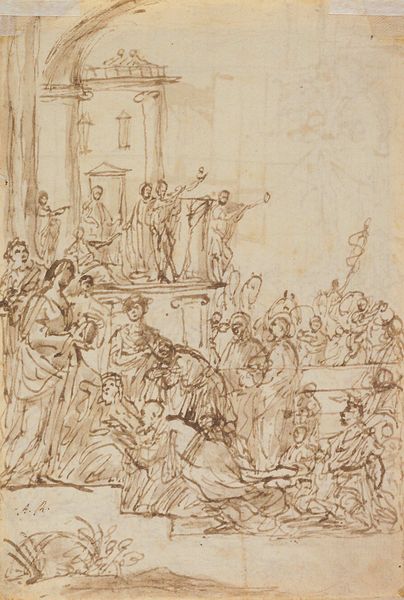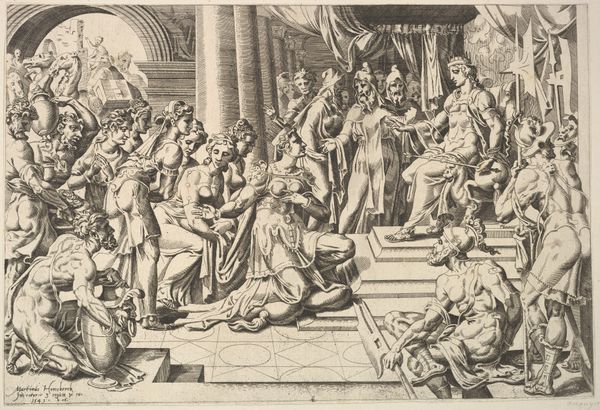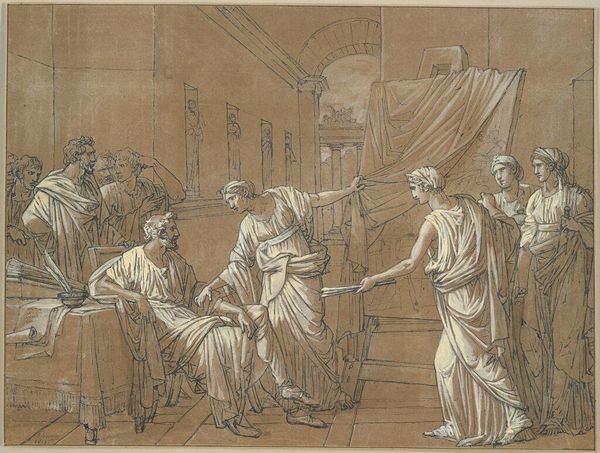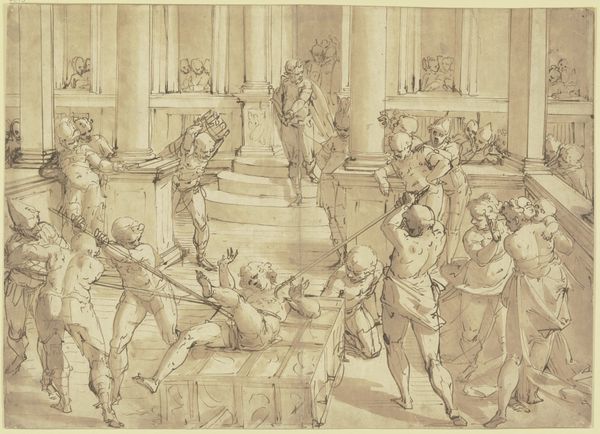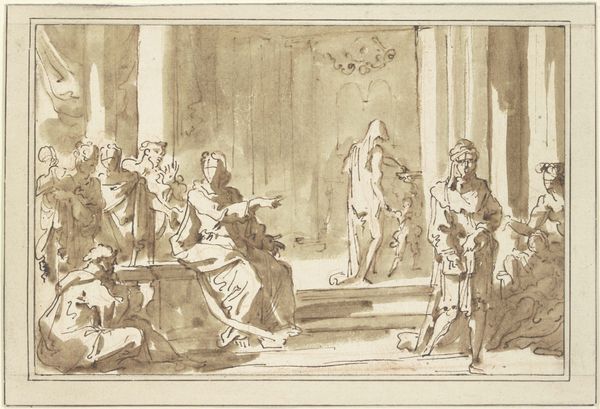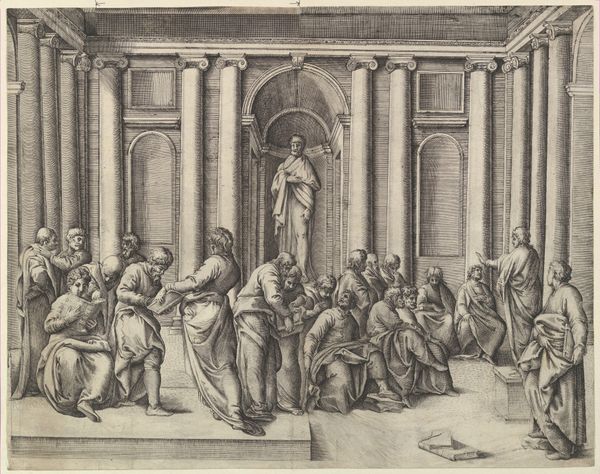
drawing, paper, ink
#
drawing
#
narrative-art
#
figuration
#
paper
#
ink
#
classicism
#
history-painting
Dimensions: 19.2 x 26.9 cm
Copyright: Public domain
Curator: What an intense scene! My initial impression is a chaotic, almost frenzied composition. The energy conveyed through the linework is palpable, making the drama visually immediate. Editor: We're looking at "Assassination of Julius Caesar," a work executed around 1796 by Vincenzo Camuccini. It's rendered in ink on paper and currently resides at the Metropolitan Museum of Art. Beyond the visceral drama, the materials themselves offer a great entry point. Ink, as a readily available, reproducible substance, mirrors the dissemination of power following the fall of Caesar. Curator: Absolutely. And the restricted palette contributes significantly to the drama. The artist's choice confines the narrative, funneling our attention directly toward the act itself. The cool washes create spatial depth, while the stark lines carve out the characters and lend them expressive gestures. Editor: Think about the historical context. Camuccini, working during a time of revolution, engages directly with questions of authority, and the very idea of republics. He also draws from earlier painters like Raphael in terms of compositional structures. You have to also consider what this work is suggesting regarding labor—how readily the act of killing is carried out. It feels...industrial, almost. Curator: Fascinating to consider in this way. Looking at the top, the stoic sculptures in the background are interesting and reveal classicism in play, serving as ghostly witnesses to the scene. The statues highlight themes of fate, justice, and perhaps the idealised visions of leadership Caesar may have represented—now shattered. The space itself, too, speaks of civic virtue defiled. Editor: Note too that it's ink, not paint; therefore, reproducible in ways not typically associated with art that can then disseminate these concepts far more widely. Camuccini certainly had the great history paintings of Rome in mind as models, as well as the tradition of producing prints from those paintings. That changes its reach in society! Curator: I agree that reproducibility brings up very interesting points when we examine Camuccini’s choice of medium. But beyond material conditions and the historical influences, I find myself returning to the emotional impact. There's a clear, expressive use of line and form, distilling this very familiar historic event into a composition that retains a visceral immediacy. Editor: Agreed. In revisiting, I’m seeing not only the physical production and cultural capital embedded in the artwork, but I'm experiencing a great range of approaches that intersect. Curator: Likewise, seeing both the artist's hand and a deeper view into historical implications gives me, even after looking so closely, a lingering sense of unsettled tragedy.
Comments
No comments
Be the first to comment and join the conversation on the ultimate creative platform.

